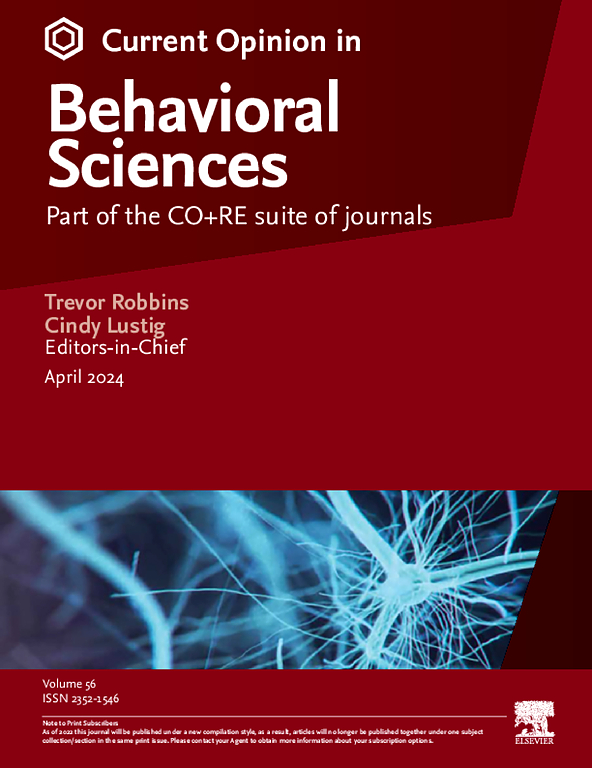后扣带皮层和默认网络的功能
IF 3.5
2区 心理学
Q1 BEHAVIORAL SCIENCES
引用次数: 0
摘要
后扣带皮层(PCC)是一个有趣但尚未被充分研究的大脑区域,涉及多种认知功能和神经系统疾病。由于缺乏明确的啮齿动物同源性,人类不一致的损伤行为缺陷,以及使用非侵入性电生理方法研究该区域的局限性,对人类PCC的了解进展受到阻碍。然而,功能性神经影像学的出现突出了PCC在默认模式网络(DMN)中的核心作用,以及它作为一个联合的、跨模的皮质区域的更广泛的功能作用。精密成像的最新进展进一步完善了PCC的功能神经解剖学,揭示了其复杂的分区域组织和网络连接概况。例如,PCC是背侧执行系统和腹侧记忆系统的交汇点,不同的子区域(PCC背侧和腹侧)对认知控制、决策和情景记忆有不同的贡献。这种对高阶认知的强调强调了PCC/DMN与初级感觉运动加工的分离。然而,新出现的证据表明,PCC在皮层处理层次的顶端运作,支持暂时扩展的认知行为,同时也整合与正在进行的任务相关的感官更新。本文综述了人类PCC的最新进展,强调其与DMN以外的各种认知系统的功能联系,以及其与主要感觉运动系统的相对分离(尽管不是孤立)。总之,这些方面允许PCC通过整合先前的经验和持续的感官反馈来支持过去和未来行为场景的表征。本文章由计算机程序翻译,如有差异,请以英文原文为准。
Functions of the posterior cingulate cortex and default network
The posterior cingulate cortex (PCC) is an intriguing yet understudied brain region implicated in diverse cognitive functions and neurological disorders. Progress in understanding the human PCC has been hindered by the absence of a clear rodent homolog, inconsistent lesion-behavior deficits in humans, and limitations in studying the region with noninvasive electrophysiological methods. However, the advent of functional neuroimaging has highlighted the PCC’s central role within the default mode network (DMN) and its broader functional role as an associative, transmodal, cortical region. Recent advances in precision imaging have further refined the functional neuroanatomy of the PCC, revealing its complex subregional organization and network connectivity profiles. For example, the PCC is a convergence point for dorsal executive and ventral mnemonic systems, with distinct subregions (dorsal PCC and ventral PCC) differentially contributing to cognitive control, decision-making, and episodic memory. This emphasis on higher-order cognition highlights the often-striking dissociation of the PCC/DMN from primary sensory-motor processing. However, emerging evidence suggests that the PCC operates at the apex of cortical processing hierarchies, supporting temporally extended cognitive behaviors while also integrating sensory updates relevant to ongoing tasks. This review synthesizes recent advances in understanding the human PCC, emphasizing its functional connections to various cognitive systems beyond the DMN and its relative separation, though not isolation, from primary sensory-motor systems. Together, these facets allow the PCC to support the representation of past and future behavioral scenarios by integrating prior experience with ongoing sensory feedback.
求助全文
通过发布文献求助,成功后即可免费获取论文全文。
去求助
来源期刊

Current Opinion in Behavioral Sciences
Neuroscience-Cognitive Neuroscience
CiteScore
10.90
自引率
2.00%
发文量
135
期刊介绍:
Current Opinion in Behavioral Sciences is a systematic, integrative review journal that provides a unique and educational platform for updates on the expanding volume of information published in the field of behavioral sciences.
 求助内容:
求助内容: 应助结果提醒方式:
应助结果提醒方式:


